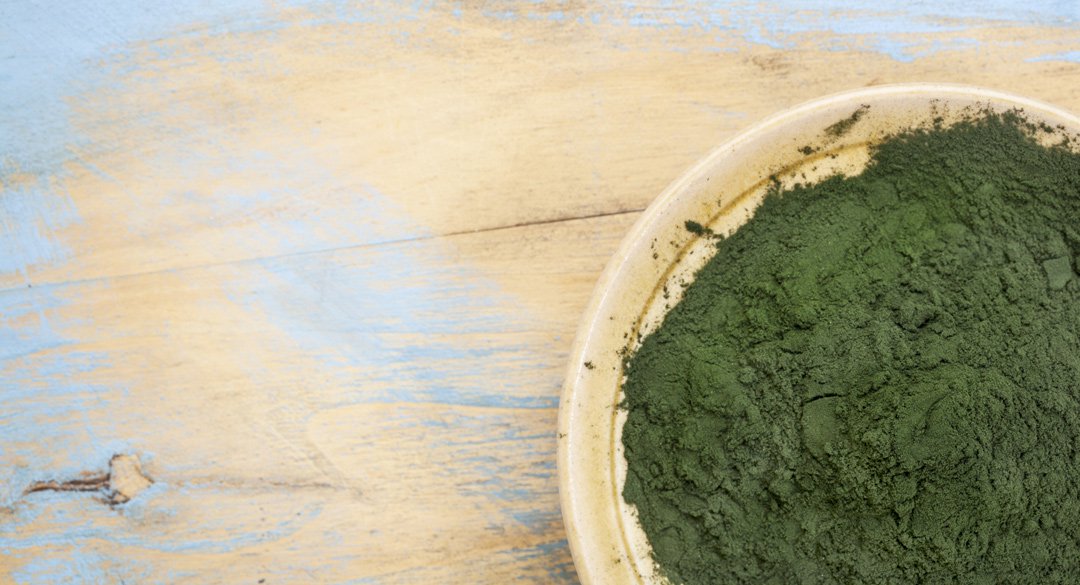9 Smoothie Supplements to Try Now

A morning smoothie can be one of the most convenient ways to fill your daily fruit and veggie quota in one fell swoop. A simple mix of produce, seeds, and soy milk can create the perfect combination of protein, fat, and carbohydrates to keep you satisfied until your next meal.
And if you supplement your smoothie, you can pack in extra protein, fiber, antioxidants, amino acids, and other essential nutrients. “Smoothie supplements add a nutritional boost and are a superb addition to any smoothie,” says Karyn Duggan, CNC, who recommends rotating among different nutrition powerhouses. “Plus, eating the same thing over and over is just one of the many ways in which we can set ourselves up for developing food sensitivities.”
Rev up your smoothie with these nine supplements; just add to your favorite recipe:
1. Spirulina
What is it? Spirulina is a blue-green algae found in salt water and some large fresh water lakes. It can be grown in both natural and controlled environments, but the natural variety is more likely to be contaminated by bacteria, so make sure the product you purchase has been tested for safety.
How it helps: Spirulina is high in protein, iron, and B vitamins, and contains other nutrients like beta-carotene, vitamin E, manganese, zinc, copper, and selenium.
2. Chia Seeds
What is it? Chia comes from the salvia hispanica plant grown in Mexico where it’s believed Mayan and Aztec cultures ate the tiny black seeds for energy (the word “chia” translates to “strength”). They can be eaten in seed form or mixed with liquid to create a gel.
How they help: Chia seeds are rich in omega-3 fatty acids, fiber, antioxidants, and calcium. The combination of protein and fiber from the chia seed gel can also be especially satiating, helping to cut down cravings.
3. Goji Berries
What are they? Goji berries grow on a native Chinese shrub and have been used to treat issues ranging from high blood pressure to diabetes and have even been believed to improve longevity.
How they help: The berries are and full of fiber and antioxidants. Some preliminary studies have indicated goji berries could be beneficial for mental well-being, mood, sleep, athletic performance, and can protect the skin from UV damage.
4. Acai Berries
What is it? Grown on the acai palm tree native to Central and South America, acai berries are deep reddish-purple fruits measuring about an inch in length.
How they help: Some studies suggest acai berries contain higher levels of antioxidants than other fruits like cranberries and strawberries.
5. Hemp Protein
What is it? Hemp powder is made by grinding the protein-rich seeds of the hemp plant, which has been cultivated for over 12,000 years around the world.
How it helps: In addition to protein, hemp seeds contain a blend of omega-3 and omega-6 fatty acids, fiber, and minerals like magnesium, iron, and vitamin E.
6. Bee Pollen
What is it? Bee pollen is made up of plant pollen, nectar, and bee saliva collected on the bodies of worker bees.
How it helps: Bee pollen is rich in a variety of vitamins and minerals and high in protein (though it’s also high in carbohydrates). Proponents say it can help enhance energy and relieve allergies, but research is still very preliminary.
7. Matcha Powder
What is it? Matcha is a finely ground green tea that originated in Japan. Green tea is the least processed of all the varieties of tea made from the leaves of the Camellia sinensis plant species.
How it helps: Because green tea undergoes little processing, it provides a higher concentration of antioxidants called catechins, which may prevent cell damage. Research has shown that green tea can effectively improve blood flow, lower cholesterol, and prevent high blood pressure.
8. Wheatgrass
What is it? Wheatgrass is just what it sounds like: the young grass of the wheat plant, Triticum aestivum. It can be found throughout the US and Europe and can be grown by submerging wheat seeds in water and harvesting the leaves. The leaves are often juiced or dried to be made into tablets or capsules.
How it helps: Wheatgrass is full of nutrients including calcium, selenium, magnesium, iron, and vitamins A, E, and B-12. Research has indicated that it can be helpful in improving the symptoms of ulcerative colitis and reducing the side effects of chemotherapy.
9. Cacao
What is it? Cacao is the raw form of dark chocolate made from crushing dehydrated cocoa beans. Unlike most commercial chocolate on the market, it isn’t sweetened with sugar or flavored with milk, so the flavor is quite bitter.
How it helps: Though it’s not as sweet to eat, cacao is full of antioxidants, magnesium, and a compound called theobromine, which provides a boost of caffeine.
The One Medical blog is published by One Medical, a national, modern primary care practice pairing 24/7 virtual care services with inviting and convenient in-person care at over 100 locations across the U.S. One Medical is on a mission to transform health care for all through a human-centered, technology-powered approach to caring for people at every stage of life.
Any general advice posted on our blog, website, or app is for informational purposes only and is not intended to replace or substitute for any medical or other advice. 1Life Healthcare, Inc. and the One Medical entities make no representations or warranties and expressly disclaim any and all liability concerning any treatment, action by, or effect on any person following the general information offered or provided within or through the blog, website, or app. If you have specific concerns or a situation arises in which you require medical advice, you should consult with an appropriately trained and qualified medical services provider.
